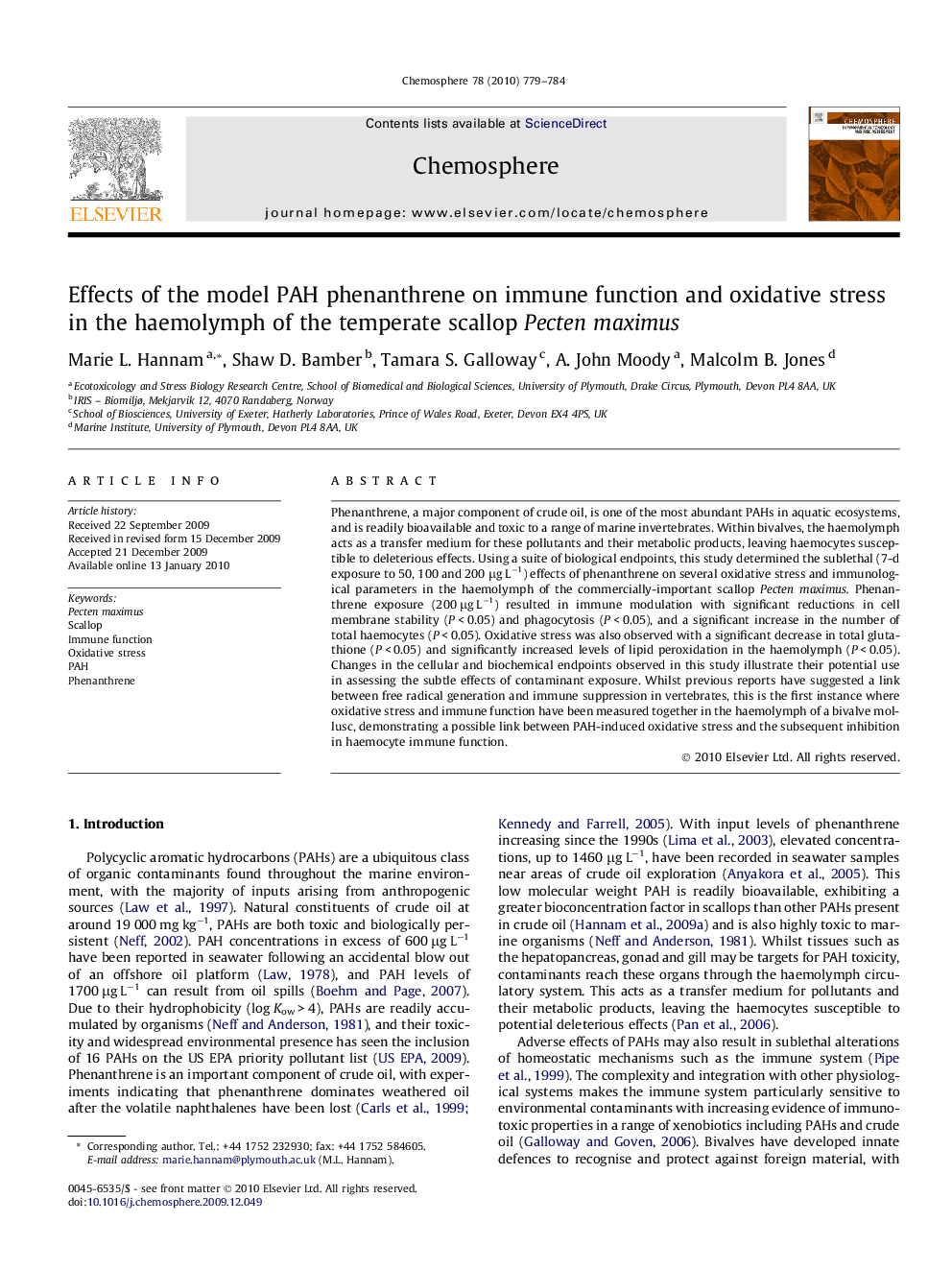| Article ID | Journal | Published Year | Pages | File Type |
|---|---|---|---|---|
| 4412067 | Chemosphere | 2010 | 6 Pages |
Phenanthrene, a major component of crude oil, is one of the most abundant PAHs in aquatic ecosystems, and is readily bioavailable and toxic to a range of marine invertebrates. Within bivalves, the haemolymph acts as a transfer medium for these pollutants and their metabolic products, leaving haemocytes susceptible to deleterious effects. Using a suite of biological endpoints, this study determined the sublethal (7-d exposure to 50, 100 and 200 μg L−1) effects of phenanthrene on several oxidative stress and immunological parameters in the haemolymph of the commercially-important scallop Pecten maximus. Phenanthrene exposure (200 μg L−1) resulted in immune modulation with significant reductions in cell membrane stability (P < 0.05) and phagocytosis (P < 0.05), and a significant increase in the number of total haemocytes (P < 0.05). Oxidative stress was also observed with a significant decrease in total glutathione (P < 0.05) and significantly increased levels of lipid peroxidation in the haemolymph (P < 0.05). Changes in the cellular and biochemical endpoints observed in this study illustrate their potential use in assessing the subtle effects of contaminant exposure. Whilst previous reports have suggested a link between free radical generation and immune suppression in vertebrates, this is the first instance where oxidative stress and immune function have been measured together in the haemolymph of a bivalve mollusc, demonstrating a possible link between PAH-induced oxidative stress and the subsequent inhibition in haemocyte immune function.
